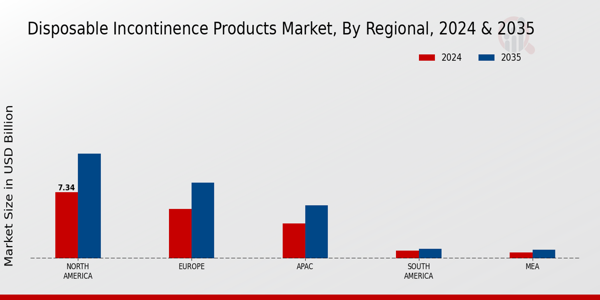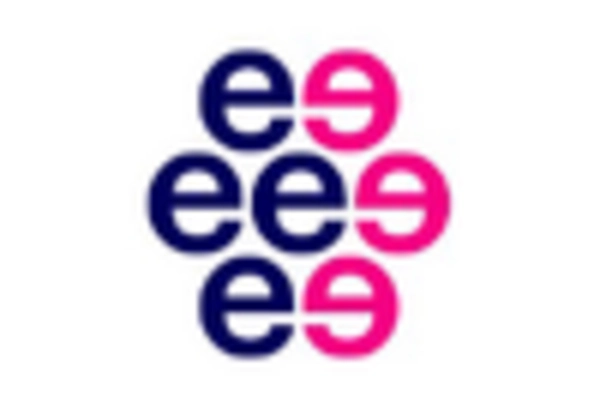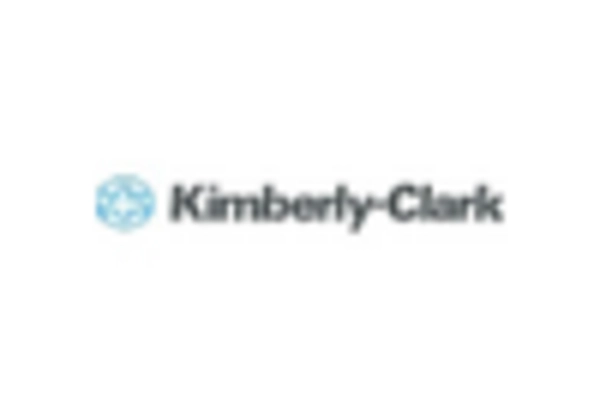Aging Population
The aging population is a primary driver of the Disposable Incontinence Products Market. As individuals age, the prevalence of incontinence tends to increase, leading to a higher demand for these products. According to recent statistics, approximately 25% of adults over the age of 65 experience some form of incontinence. This demographic shift is expected to continue, with projections indicating that by 2030, the number of individuals aged 65 and older will reach 1.5 billion. Consequently, manufacturers are focusing on developing innovative and comfortable incontinence products to cater to this growing segment, thereby propelling the Disposable Incontinence Products Market.
Rising Healthcare Expenditure
Rising healthcare expenditure is another significant driver influencing the Disposable Incontinence Products Market. As healthcare systems evolve, there is an increasing allocation of resources towards managing chronic conditions, including incontinence. In many regions, healthcare spending has seen a steady increase, with estimates suggesting that it could reach 10% of GDP in several countries by 2025. This trend encourages healthcare providers to offer better solutions for incontinence management, leading to a surge in demand for disposable products. Furthermore, the integration of incontinence products into healthcare plans enhances accessibility, thereby expanding the Disposable Incontinence Products Market.
Product Innovation and Development
Product innovation and development play a crucial role in shaping the Disposable Incontinence Products Market. Manufacturers are increasingly investing in research and development to create advanced products that offer improved absorbency, comfort, and discretion. Innovations such as the use of superabsorbent polymers and breathable materials have transformed the user experience. Additionally, the introduction of gender-specific products and eco-friendly options is gaining traction. Market data indicates that the segment of premium incontinence products is expected to grow at a CAGR of 6% over the next five years, reflecting the industry's commitment to meeting diverse consumer needs and preferences.
Changing Lifestyle and Urbanization
Changing lifestyle and urbanization are pivotal factors influencing the Disposable Incontinence Products Market. As urban areas expand, lifestyles become more fast-paced, leading to increased stress and health issues, including incontinence. Urbanization often correlates with a higher prevalence of sedentary lifestyles, which can exacerbate incontinence problems. Additionally, the convenience of disposable products aligns well with the needs of urban consumers who prioritize ease of use and hygiene. Market trends suggest that urban populations are more inclined to purchase disposable incontinence products, contributing to a projected growth rate of 5% annually in this sector.
Increased Awareness of Incontinence
Increased awareness of incontinence is significantly driving the Disposable Incontinence Products Market. Educational campaigns and advocacy efforts have contributed to reducing the stigma associated with incontinence, encouraging individuals to seek solutions. As awareness grows, more people are likely to explore available products, leading to higher sales. Surveys indicate that nearly 70% of individuals experiencing incontinence are unaware of the various products available to them. This gap presents an opportunity for manufacturers to engage in targeted marketing strategies that highlight the benefits of disposable incontinence products, thereby expanding their market reach and enhancing overall sales.


















Leave a Comment